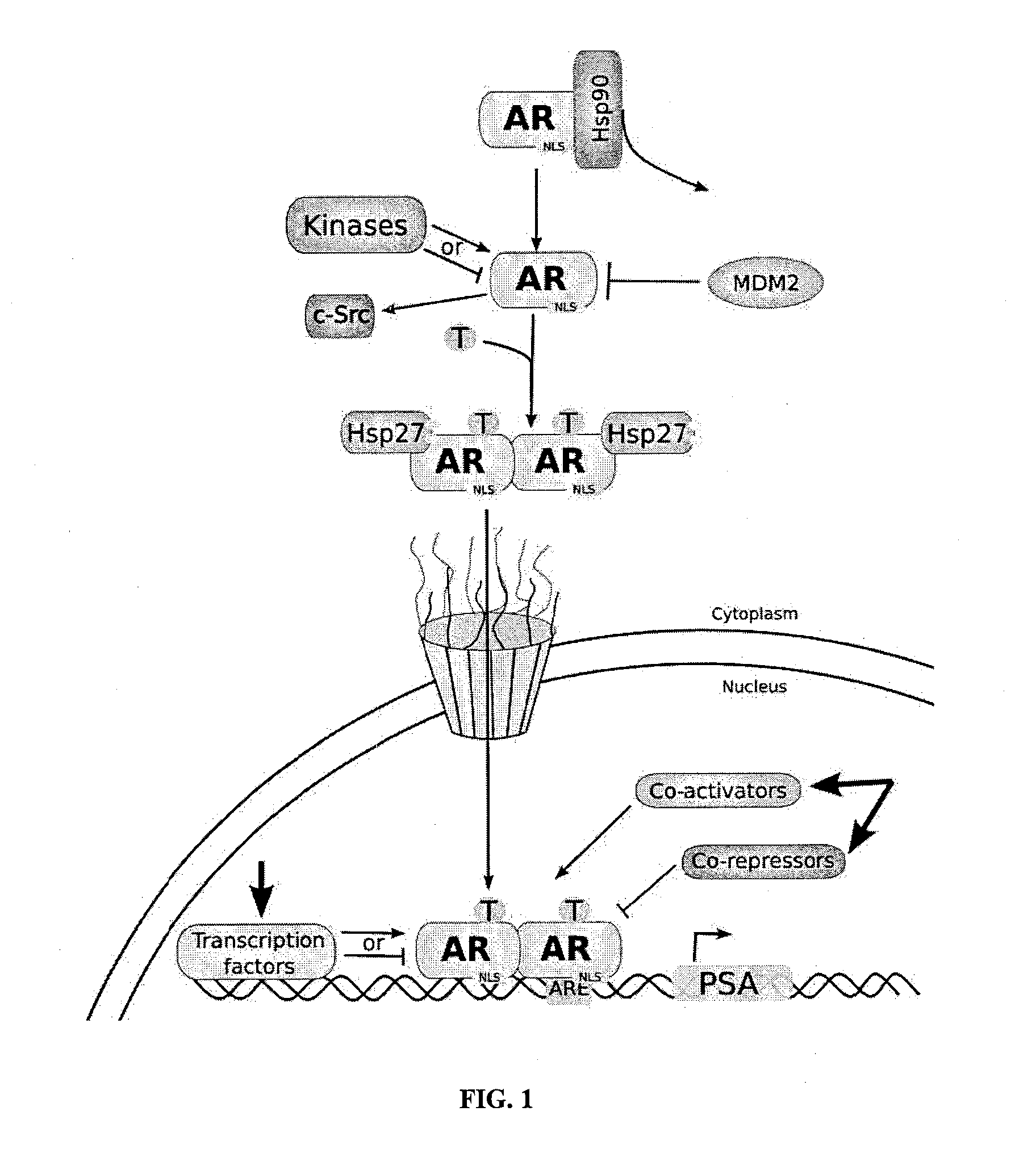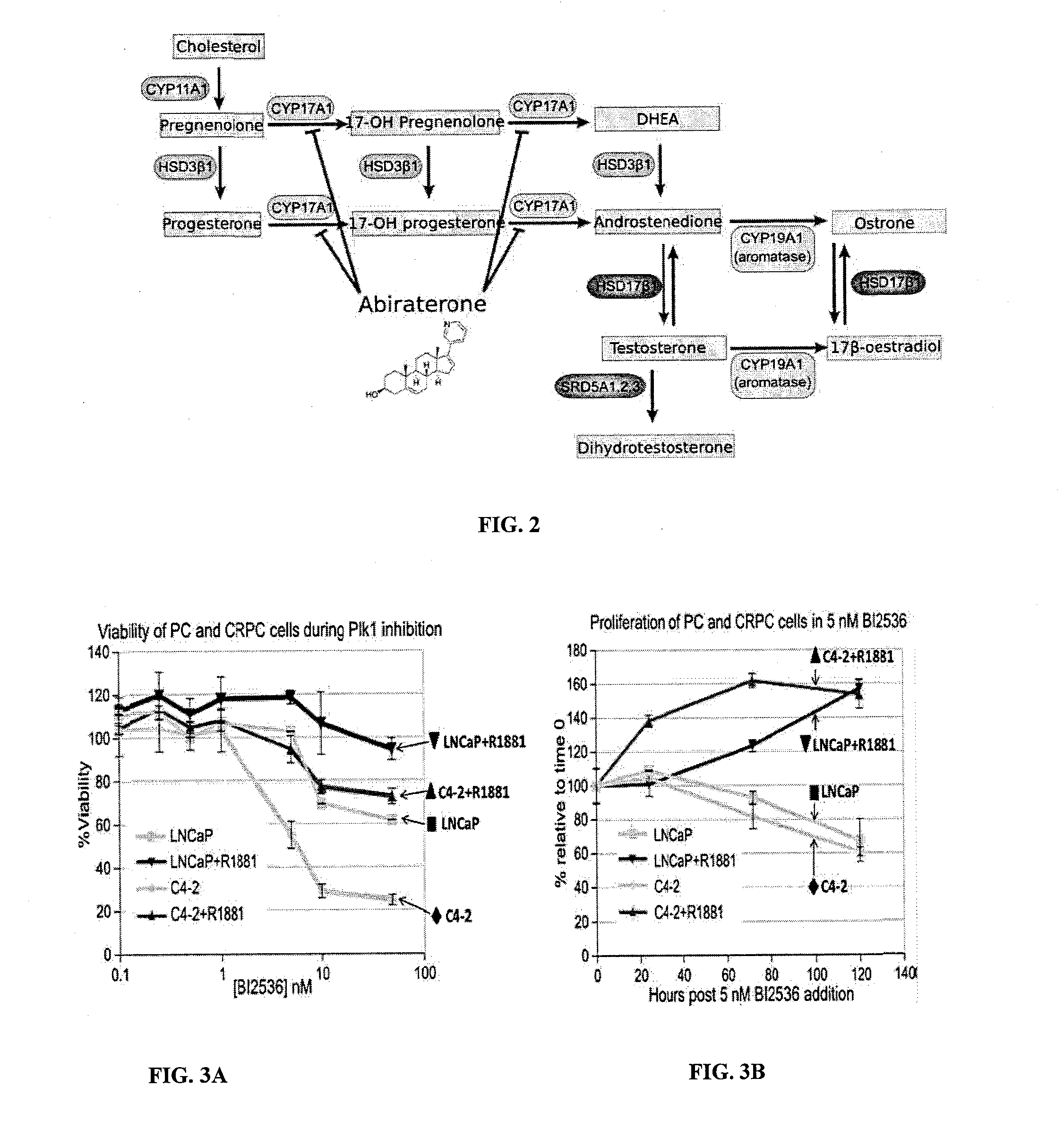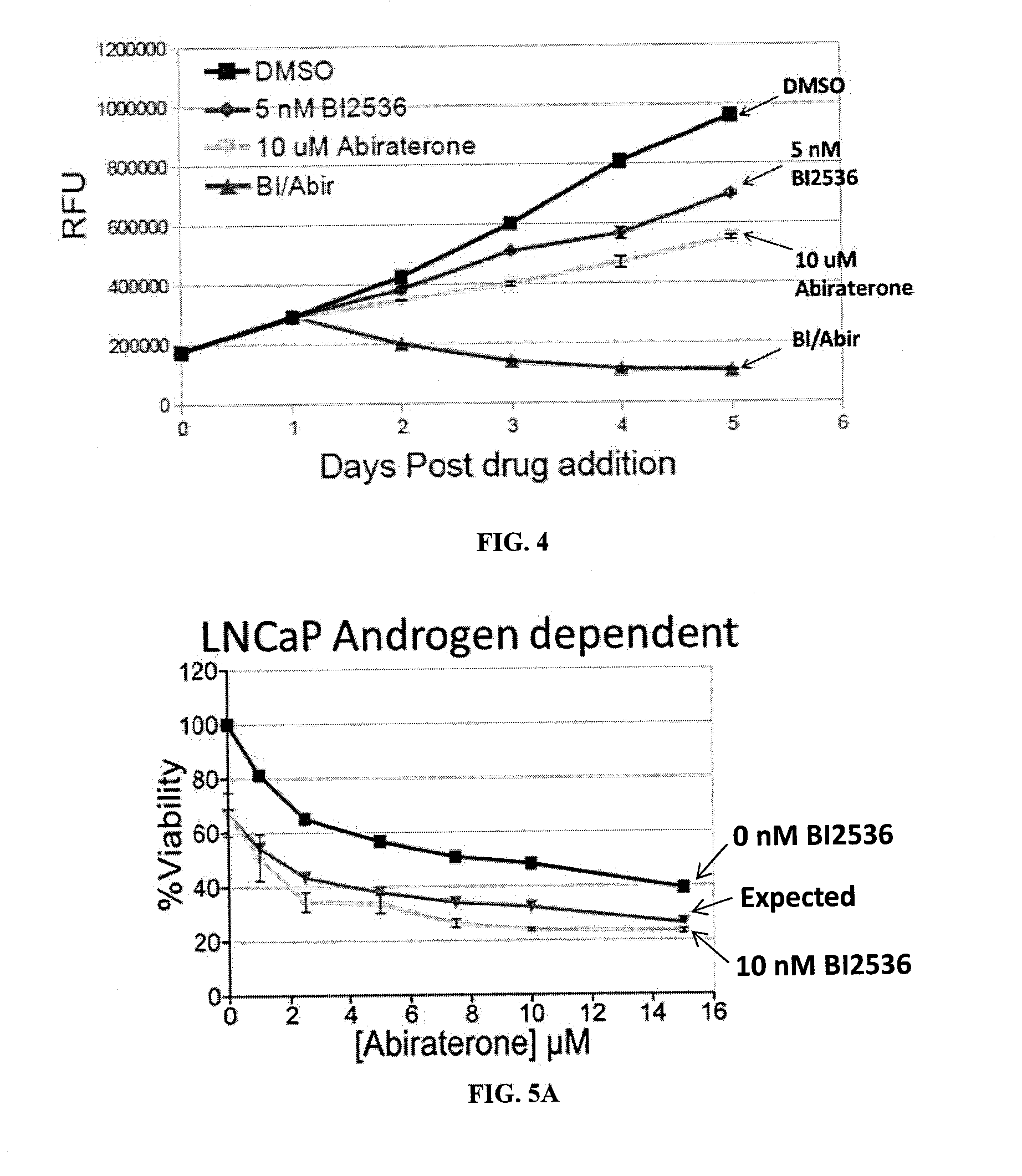Combination Therapies and Methods of Use Thereof for Treating Cancer
a cancer and combination therapy technology, applied in the field of combination therapies, can solve the problems that either agent administered alone is ineffective in treating cancer, and achieve the effects of improving the initial efficacy of one agent, and reducing cancer cell proliferation or viability
- Summary
- Abstract
- Description
- Claims
- Application Information
AI Technical Summary
Benefits of technology
Problems solved by technology
Method used
Image
Examples
example 1
Prostate Cancer Cells are Sensitive to Plk1 Inhibition
Materials and Methods
[0264]Prostate cancer cell lines (LNCaP and C4-2) were seeded into 96-well plates in RPMI-1640 medium containing 10 fetal-bovine serum depleted of androgen by activated charcoal-dextran (csFBS). Twenty four hours later, the indicated concentration of BI2536 and R1881 were added, representing time zero. Viability of the prostate cancer cells was assessed using Cell-Titer Glo™ according to the manufacturer's instructions.
Results
[0265]An experiment was designed to test the effect of Plk1 on prostate cancer cells. The androgen-sensitive cells (LNCaP) and castrate resistant prostate cancer cells (CRPC) (C4-2) were treated with increasing concentrations of BI2536 in the presence and absence of synthetic androgen (R1881). The results, shown in FIG. 3A shows that viability of both cell lines is reduced in the presence of BI2536, but the viability can be somewhat rescued in the presence of synthetic androgen.
[0266]FIG...
example 2
The Effect of Co-Treatment with BI2536 and Abiraterone on Prostate Cancer Cells is More than Additive
Materials and Methods
[0268]For FIG. 4, CRPC cells (C4-2) were seeded into 96-well plates in RPMI-1640 medium containing 10% FBS (not stripped with charcoal-dextran). 24 hours later the indicated concentrations of Abiraterone and / or BI2536 were added, representing day 0. Viability was measured for the subsequent five days using Cell-Titer Glo™ according to the manufacturer's instructions.
[0269]Dose response curves presented in FIG. 5A-C were measured by seeding into 96 well plates CRPC cells (C4-2 and 22RV1) and androgen dependent prostate cancer cells (LNCaP) in RPMI 1640 containing 10% csFBS or FBS, respectively. Twenty four hours later the indicated concentrations of Abiraterone and 5 nM BI2536 were added. Cell viability was assessed after 5 days using Cell-Titer Glo™ according to the manufacturer's instructions.
Results
[0270]Experiments were designed to test the effect of co-admini...
example 3
The Effect of Co-Treatment with BI2536 and Abiraterone on Breast Cancer Cells is More than Additive
[0273]Materials and Methods
[0274]The breast cancer cell lines AU565 (expresses the AR) and BT20 (does not express the AR) were seeded into 96-well plates in DMEM medium containing 10% FBS. Twenty four hours later the indicated concentrations of Abiraterone and 5 nM BI2536 were added. Cell viability was assessed after 5 days using Cell-Titer Glo™ according to the manufacturer's instructions.
[0275]Results
[0276]Experiments were designed to test the effect of co-administration of BI2536 and abiraterone on breast cancer cells. FIGS. 6A and 6B show the results of assays measuring the % viability of the AU565 and BT20 cells in the presence () or absence () of BI2536 and increasing concentrations of abiraterone. The expected outcome if these agents were acting in an additive manner is also indicated (). The results indicate % viability of cells treated with both agents is reduced to a greater ...
PUM
| Property | Measurement | Unit |
|---|---|---|
| octanol-water partition coefficient | aaaaa | aaaaa |
| molecular weight | aaaaa | aaaaa |
| molecular weight | aaaaa | aaaaa |
Abstract
Description
Claims
Application Information
 Login to View More
Login to View More - R&D
- Intellectual Property
- Life Sciences
- Materials
- Tech Scout
- Unparalleled Data Quality
- Higher Quality Content
- 60% Fewer Hallucinations
Browse by: Latest US Patents, China's latest patents, Technical Efficacy Thesaurus, Application Domain, Technology Topic, Popular Technical Reports.
© 2025 PatSnap. All rights reserved.Legal|Privacy policy|Modern Slavery Act Transparency Statement|Sitemap|About US| Contact US: help@patsnap.com



